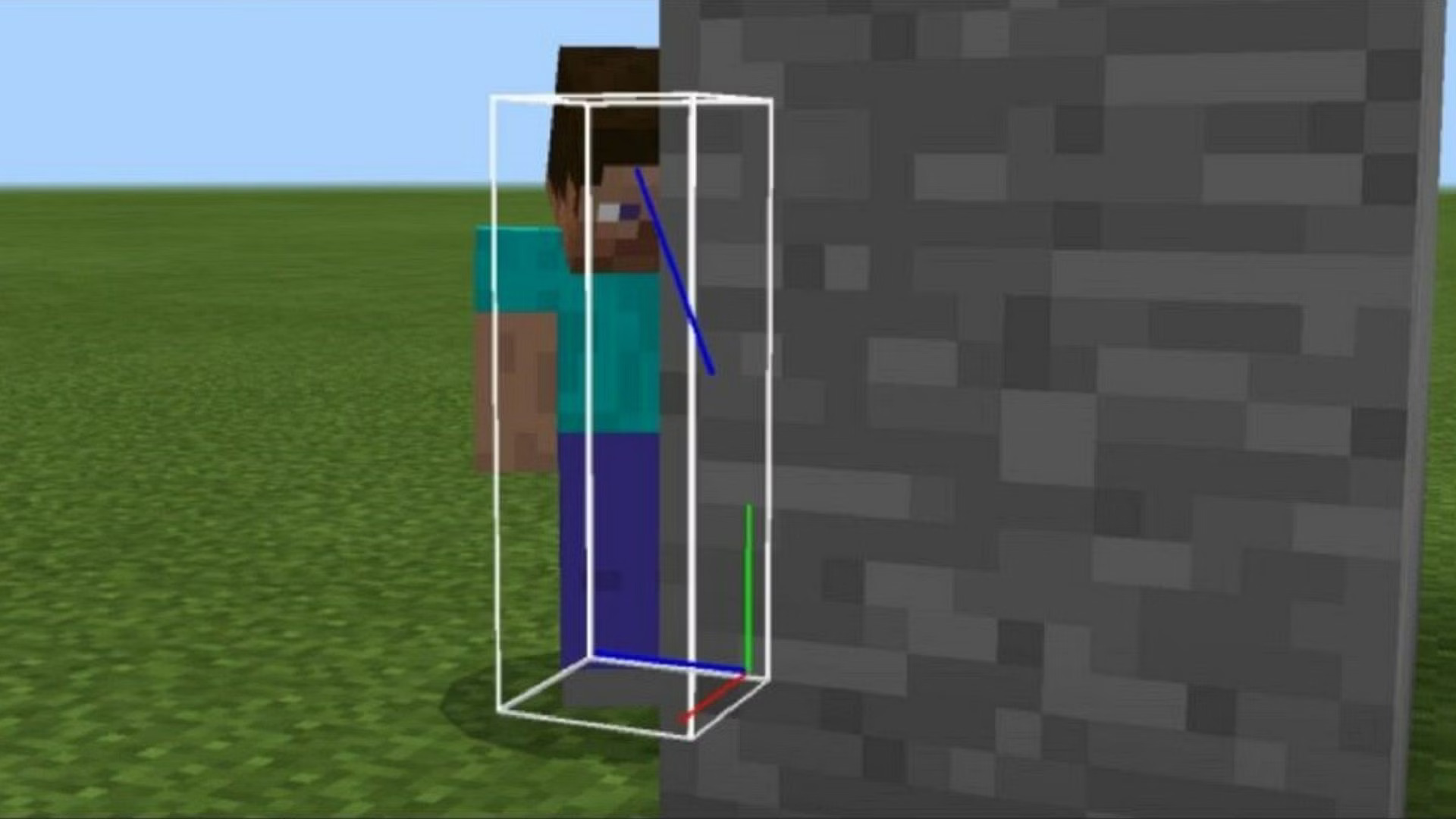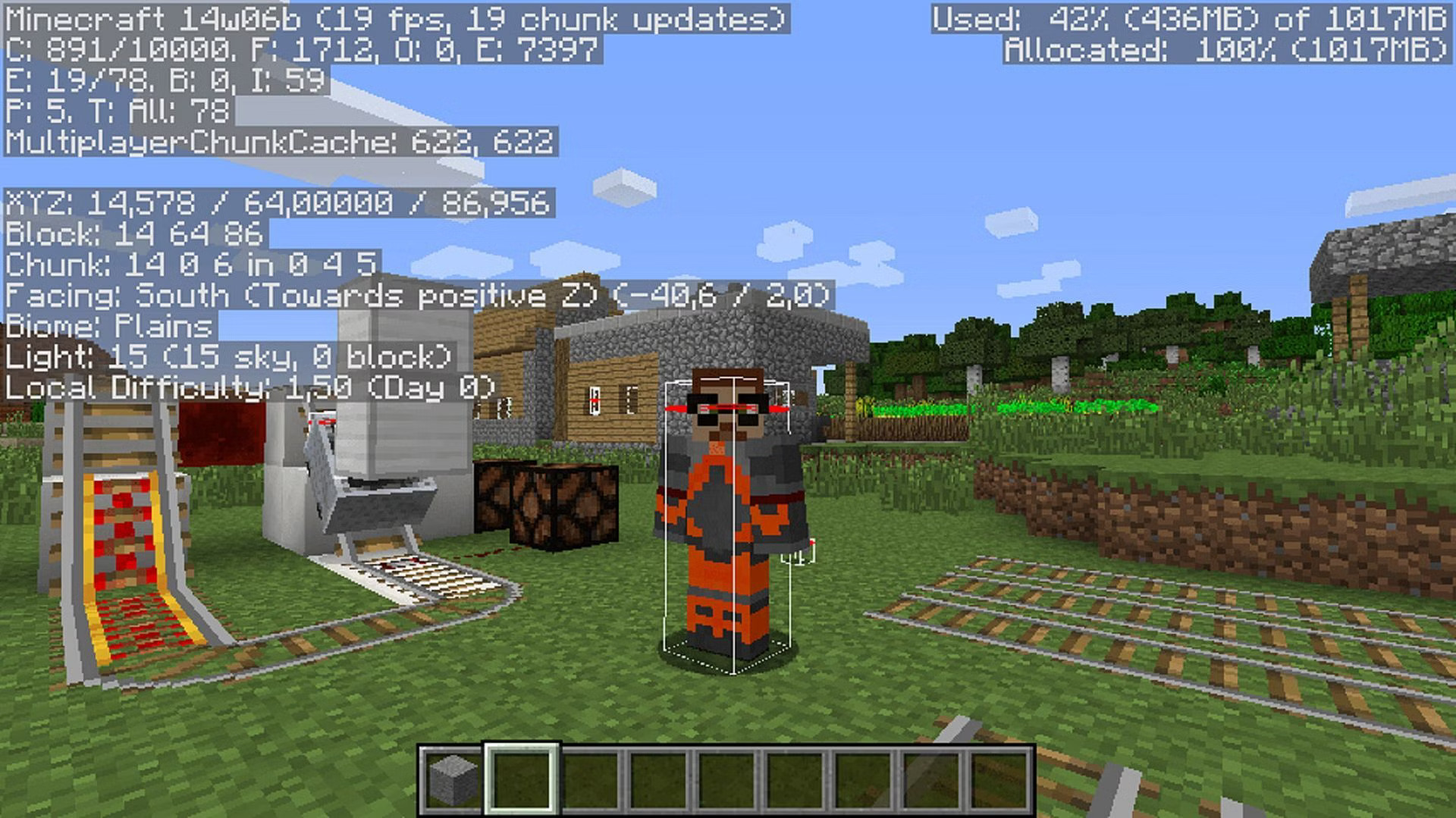Minecraft, the iconic sandbox game developed by Mojang, has captured the hearts of millions with its limitless creativity and exploration possibilities. Among the vast array of features, one aspect that is particularly important for players, especially in competitive gameplay or map development, is the hitboxes. Hitboxes are invisible boundaries surrounding objects, mobs, and players that determine if an attack connects or if an interaction occurs. Understanding hitboxes can significantly impact combat effectiveness, target precision, and overall gameplay experience.
While Minecraft does not display hitboxes by default, there are various methods and tools available to enable players to visualize these crucial elements. Utilizing these techniques can provide invaluable insights, enhance combat proficiency, and assist in designing intricate redstone contraptions and adventure maps.
One common approach to reveal hitboxes is through the use of mods or plugins. Minecraft’s extensive modding community offers a multitude of options, making it possible to integrate hitbox visualization seamlessly into the game. These mods often come with customizable settings, allowing players to adjust the appearance and visibility of hitboxes to suit their preferences.
Alternatively, some resource packs are designed explicitly for displaying hitboxes. Resource packs modify the game’s textures and assets, enabling players to see hitboxes as colorful outlines around entities or objects. These packs are particularly popular among map makers and content creators, as they facilitate precise positioning of objects and mobs.
For those who prefer not to modify their game or use mods, there are external tools available that can overlay hitbox information on the screen. These tools run alongside Minecraft and provide real-time hitbox visuals without altering the game files.
Understanding how to show hitboxes in Minecraft is not only a useful skill for competitive players and content creators but also enhances the overall gaming experience. Whether you choose to utilize mods, resource packs, or external tools, the ability to visualize hitboxes empowers you to navigate the Minecraft world with greater precision, creativity, and a deeper understanding of the game’s mechanics. So, step into your world with newfound knowledge, and let the hitboxes guide your adventures to unprecedented heights.
What are Hitboxes in Minecraft?

Hitboxes in Minecraft refer to the invisible, three-dimensional boundaries that surround entities, blocks, and other objects within the game world. These hitboxes define the spatial area occupied by each entity, such as mobs (hostile and passive creatures), players, and items. When an entity or object has a hitbox, it means that it can interact with other elements in the game environment.
Hitboxes serve several critical functions in Minecraft gameplay:
- Combat Mechanics: In combat situations, hitboxes determine whether an attack connects with an entity. When a player swings a weapon at a mob or another player, the game checks if the weapon’s hitbox intersects with the target entity’s hitbox. If they do, the attack registers and deals damage.
- Entity Interactions: Hitboxes also play a role in enabling interactions with entities. For example, players can right-click on certain entities to access their inventories or perform specific actions, like shearing sheep or riding horses.
- Collision Detection: Hitboxes are used for collision detection, ensuring that entities and objects don’t overlap or pass through each other. This is crucial for maintaining a coherent and realistic game world.
- Projectile Collisions: When projectiles such as arrows, snowballs, or potions are launched, the game uses hitboxes to determine if they hit their intended targets. A successful collision within an entity’s hitbox results in the projectile’s intended effect, such as dealing damage or applying a potion effect.
- Mob AI and Pathfinding: Mobs use hitboxes to navigate through the world, detect obstacles, and interact with other entities and objects. Their hitboxes allow them to move and behave in a way that feels more dynamic and lifelike.
- Redstone Mechanics: Hitboxes are essential for interacting with redstone components like buttons, levers, pressure plates, and other mechanisms. These interactions influence the flow of energy and trigger various actions in redstone contraptions.
Understanding hitboxes is crucial for players who want to improve their combat skills, create complex redstone devices, design adventure maps, or engage in player-versus-player (PvP) gameplay. While hitboxes themselves are invisible during regular gameplay, various mods, resource packs, and external tools can be used to visualize them, aiding players in precise targeting and building efforts.
Functions of hitboxes as of Minecraft

In Minecraft, hitboxes serve several essential functions that impact gameplay and the overall experience of the players. These invisible boundaries play a significant role in determining how interactions occur within the game. Here are some of the key functions of hitboxes in Minecraft:
- Combat Interactions: Hitboxes are crucial for combat mechanics in Minecraft. They determine whether an attack successfully connects with an entity, such as mobs or other players. When a player strikes an entity within its hitbox, damage is registered, affecting the entity’s health and potentially triggering other in-game effects.
- Mob AI and Pathfinding: Hitboxes influence the behavior of mobs in the game. They provide information on the space occupied by each entity, enabling them to navigate the environment, detect obstacles, and interact with other entities or objects effectively.
- Entity Interactions: Hitboxes govern how entities interact with various objects in the game world. For example, a hitbox allows players to right-click on certain entities to access their inventories or trigger specific actions, such as shearing sheep or riding horses.
- Projectile Collisions: Hitboxes play a crucial role in determining if projectiles, such as arrows or snowballs, hit their intended targets. A successful collision within an entity’s hitbox registers damage or other effects from the projectile.
- Redstone Mechanics: In Minecraft, redstone is a critical component of complex machinery and contraptions. Hitboxes play a role in interacting with redstone components like buttons, levers, and pressure plates, influencing the flow of energy and triggering various actions.
- Building and Interaction: Understanding hitboxes is vital for precise building and interaction in Minecraft. Players can align objects and structures effectively, preventing overlap or unintended intersections.
- Map Creation and Adventure Design: For map creators and adventure designers, hitboxes are essential for crafting challenging and engaging experiences. Properly configured hitboxes allow for intricate puzzles, obstacles, and parkour challenges.
- Entity Farming and Management: When players create mob farms for resource gathering, knowledge of hitboxes is vital. Proper spacing and containment are necessary to maximize efficiency while minimizing risks to players.
- Player vs. Player (PvP) Combat: In PvP combat scenarios, understanding hitboxes is crucial for skilled players to optimize their attacks, maneuvers, and dodges, ultimately leading to a more rewarding and competitive experience.
In summary, hitboxes in Minecraft play a fundamental role in combat, interactions, redstone mechanics, and overall gameplay. Understanding hitboxes empowers players and map creators to craft intricate and enjoyable experiences in the ever-expanding blocky universe of Minecraft.
How to Enable Hitboxes
Minecraft does not have an in-built option to enable hitboxes in the game settings. However, there are a few ways you can reveal hitboxes using external tools, mods, or resource packs. Keep in mind that the availability and functionality of these methods may change with updates to Minecraft or the introduction of new mods and tools. Always ensure you are using the most up-to-date versions of any third-party software.
Here are some general methods to enable hitboxes in Minecraft:
- Mods and Plugins: There are mods and plugins available for different Minecraft versions that allow you to visualize hitboxes. These mods often come with customizable settings, so you can adjust the appearance and visibility of hitboxes according to your preferences.
- Resource Packs: Some resource packs are designed specifically to display hitboxes. These packs modify the game’s textures and assets, making hitboxes visible as colored outlines around entities or objects.
- External Tools: There are external tools created by the Minecraft community that can overlay hitbox information on the screen while you play. These tools run alongside Minecraft and provide real-time hitbox visuals without modifying the game files.
- Command Blocks (Java Edition): In the Java Edition of Minecraft, you can use command blocks to reveal hitboxes. This method requires some knowledge of commands and redstone, and the hitboxes will only be visible temporarily.
Since the methods to enable hitboxes can vary depending on the Minecraft version and the specific tools or mods available, I recommend searching for up-to-date tutorials or resources online. However, always exercise caution and only download and install mods or tools from reputable sources to ensure the safety and stability of your Minecraft experience. Additionally, keep in mind that using mods or external tools might affect the game’s performance or compatibility with other mods, so it’s essential to test them in a controlled environment before using them in your main world or server.
How to see Hitboxes in Minecraft?
Minecraft does not have an in-built option to see hitboxes in the game settings. However, there are a few ways you can visualize hitboxes using external tools, mods, or resource packs. Keep in mind that the availability and functionality of these methods may change with updates to Minecraft or the introduction of new mods and tools. Always ensure you are using the most up-to-date versions of any third-party software.
Here are some general methods to see hitboxes in Minecraft:
- Mods and Plugins: There are mods and plugins available for different Minecraft versions that allow you to visualize hitboxes. These mods often come with customizable settings, so you can adjust the appearance and visibility of hitboxes according to your preferences.
- Resource Packs: Some resource packs are designed specifically to display hitboxes. These packs modify the game’s textures and assets, making hitboxes visible as colored outlines around entities or objects.
- External Tools: There are external tools created by the Minecraft community that can overlay hitbox information on the screen while you play. These tools run alongside Minecraft and provide real-time hitbox visuals without modifying the game files.
- Command Blocks (Java Edition): In the Java Edition of Minecraft, you can use command blocks to reveal hitboxes. This method requires some knowledge of commands and redstone, and the hitboxes will only be visible temporarily.
Here’s an example command you can use with a command block in the Java Edition:
/gamerule showDeathMessages true
This command enables death messages, which briefly display the hitbox of a killed entity when they die. However, this method is not as comprehensive as using mods or external tools.
Since the methods to see hitboxes can vary depending on the Minecraft version and the specific tools or mods available, I recommend searching for up-to-date tutorials or resources online. However, always exercise caution and only download and install mods or tools from reputable sources to ensure the safety and stability of your Minecraft experience. Additionally, keep in mind that using mods or external tools might affect the game’s performance or compatibility with other mods, so it’s essential to test them in a controlled environment before using them in your main world or server.
Conclusion!
To display hitboxes in Minecraft, you have several options at your disposal, but the game does not offer a built-in option to enable them directly. Utilize third-party mods or plugins specifically designed to visualize hitboxes. These modifications can be installed in your Minecraft game, and many come with customizable settings to adjust hitbox appearance and visibility. Apply resource packs that modify the game’s textures and assets to make hitboxes visible. These packs usually show hitboxes as colored outlines around entities or objects, and they are often used by map makers and content creators.










